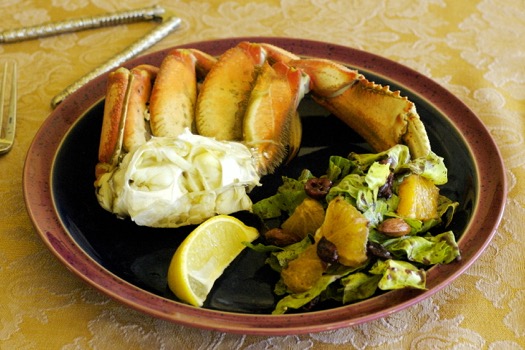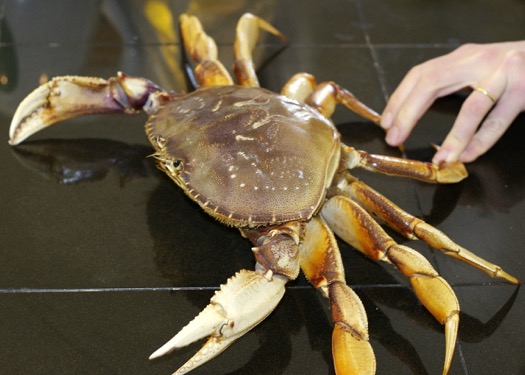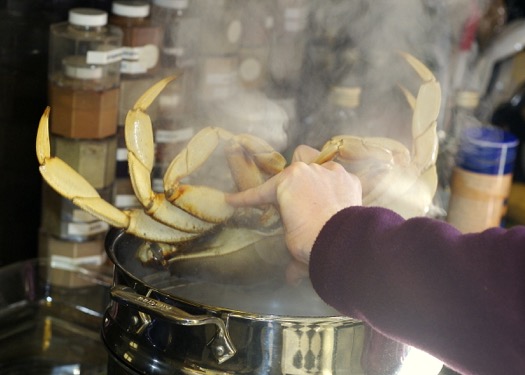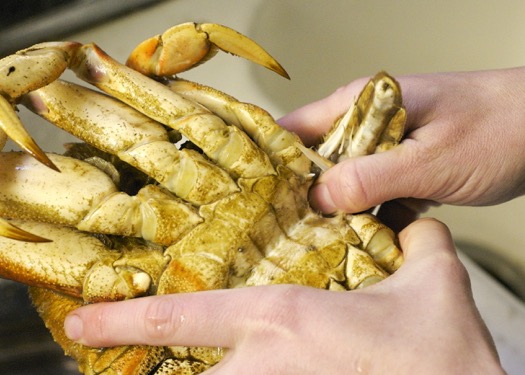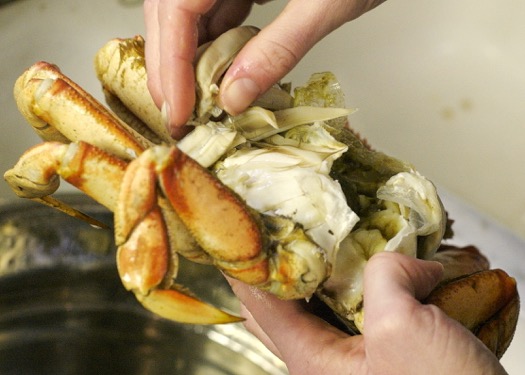How to Dress and Cook Crab
It is very easy to cook and prepare crab as long as you follow some fundamental guidelines. All you need is a large steamer or stockpot, source of fire and some attention to detail in order to prepare a tasty and nutritious meal in the field. Let’s take a look at the basic steps to follow so you can start incorporating their meats into your survival meal options.
Safe Handling
Cooking live crab will give you the best flavor and quality, but it’s important that you handle them properly to avoid getting pinched. You want to choose crab that are active and feisty as this is an indication of their health. The best way to handle live crab is either by using long tongs or grabbing them from behind. Hold down their back two legs with one hand while you pick the crab up from its back end with the other. Flip the crab over and place into a pot of boiling water. You can also keep crab in a cooler on ice or in the refrigerator as cold air and water will slow their metabolism and make them easier to work with.
A general rule of thumb is that you should cook the crab in boiling water for 6-8 minutes per pound. Keep in mind that this time should be used for the average weight of all the crabs you are cooking, not the sum total. So, if you have a pot full of two pound crabs, you will cook them between 12 and 16 minutes. Start timing as soon as the water boils. Steaming crab is the better of the two options, which may or may not be practical in the field. There’s nothing wrong with boiling, but the meat may end up being a little more water-logged.
Remove the crab from the pot as soon as it has cooked and run or soak it under cold water. This will stop the cooking process and make the crab easier to process.
Processing the Crab
The first step is to invert the crab and remove the apron, or the flap that extends from the back of the crab. Grab it between your thumb and forefinger, give it a good twist and yank, and it should pop right out. The next step is to rip off the top shell, or carapase, by inserting your thumb in the hole left by the apron and grabbing the top of the shell with your fingers. Gently peel it off of the body and it should detach with little difficulty.
Next, pull away the gills that are on both sides of the body and then twist and pull off the jaw bones. They look like little pincers next to the mouth. Discard these pieces as they are inedible. Give the crab a good rinse to remove any gunk, fluids or small pieces of debris. All you need to do now is break the crab in half along the midpoint where the legs connect to the body. Serve and enjoy.
Some people prefer to clean the crab before cooking in order to prepare more meat in one sitting. However, you run the risk of losing a lot of meat in the form of goo as you disassemble the crab. If you want to try and dress the crab prior to cooking, freeze it or let it chill for a few hours in order to help the goo to solidify before pulling it apart.
Make sure to maintain safe hygiene practices and thoroughly clean areas that have come into contact with the innards of the crab. You also want to make sure that you discard any food remnants to avoid attracting critters to your site. You can use them for bait or toss them back in the water as an easy way of disposal. Try this out for yourself the next time you come across some crab, and see how this simple technique will make it easier to cook them in the field.
